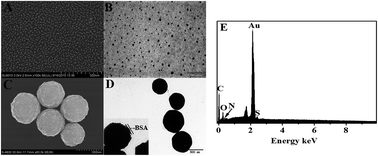A biosensing interface based on Au@BSA nanocomposite for chiral recognition of propranolol
Abstract
The nanocomposite (Au@BSA) which was synthesized using gold nanoparticles (AuNPs) and bovine serum albumin (BSA) was used as an electrochemical sensing layer for chiral recognition of propranolol (PRO). Scanning electron microscopy (SEM), energy dispersive X-ray (EDX) spectroscopy, transmission electron microscopy (TEM), ultraviolet-visible (UV-vis) spectroscopy and amperometric testing technique were employed to characterize the Au@BSA nanocomposite. Differential pulse voltammetry (DPV) and atomic force microscopy (AFM) were used to assess the enantioselective performance of the fabricated interface, and the optimal experimental conditions, such as acidity and incubation time were also discussed. The results showed that after the modified interface interacted with PRO enantiomers larger discrepancy was obtained from S-PRO, and linear electrochemical responses to PRO enantiomers were obtained from 1.0 × 10−5 to 5.0 × 10−3 mol L−1 with a detection limit of 3.3 × 10−6 mol L−1 (S/N = 3). To gain more information on the role of gold nanoparticles (AuNPs) and bovine serum albumin (BSA) in the chiral recognition of PRO enantiomers, the interface fabricated using AuNPs or BSA was also allowed to interact with PRO enantiomers, and no obvious signal discrepancy was obtained. The results suggested that only Au@BSA could be employed for the enantioselective recognition of PRO enantiomers.


 Please wait while we load your content...
Please wait while we load your content...